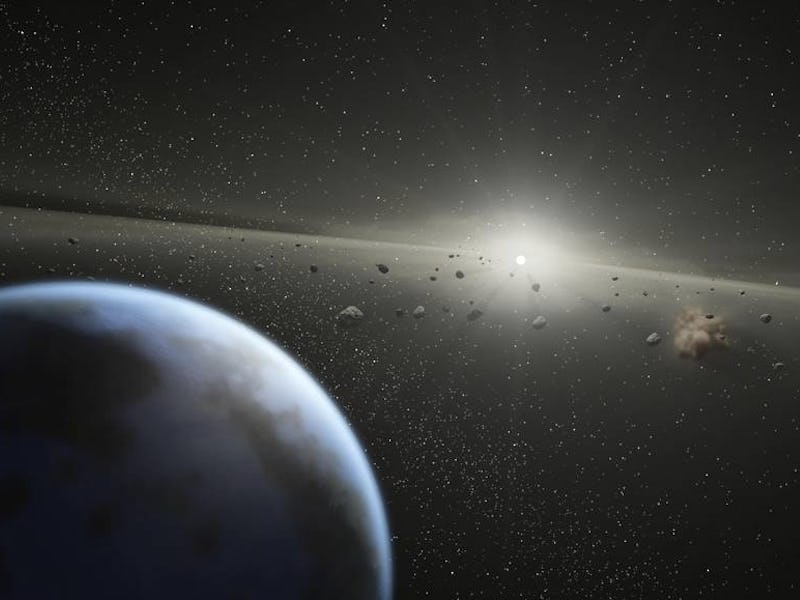Giant Balls of Mud Once Traveled Our Solar System, Scientists Say
Asteroids aren't all hard as rock.

Gigantic balls of warm mud, hurling through space, were likely the building blocks of our solar system. Scientists previously believed that rocky asteroids were responsible for bringing water and organic material to terrestrial planets — like Earth — but new research suggests what actually could have been flinging those materials through space were some big, muddy orbs.
In the awesomely titled paper, “Giant Convecting Mud Balls of the Early Solar System,” scientists Philip A. Bland and Bryan J. Travis outline how, via computer simulations, early asteroids previously thought to be rock-hard were likely much less crunchy.
The most common type of asteroid, known as a carbonaceous asteroid, is formed from dust, ice and mineral grains called chondrules. They are thought to have formed out of leftover dust following the sun’s formation.
“These bodies would have accreted as a high-porosity aggregate of igneous clasts and fine-grained primordial dust, with ice filling much of the pore space,” says Travis. “Mud would have formed when the ice melted from heat released from decay of radioactive isotopes, and the resulting water mixed with fine-grained dust.”
In plain speak, the materials involved in a carbonaceous asteroid would have caused a lengthy convection resulting in a big mud phase before these asteroids could have turned into solid rock. This leads to the belief that mud balls may have travelled across our solar system back in the day.
The paper was published in Science Advances on Friday. The findings could impact research into how life got started in our solar system, as well as how and where we should be looking for other habitable planets.
In other words, follow the mud trail.
Abstract:
Carbonaceous asteroids may have been the precursors to the terrestrial planets, yet despite their importance, numerous attempts to model their early solar system geological history have not converged on a solution. The assumption has been that hydrothermal alteration was occurring in rocky asteroids with material properties similar to meteorites. However, these bodies would have accreted as a high-porosity aggregate of igneous clasts (chondrules) and fine-grained primordial dust, with ice filling much of the pore space. Short-lived radionuclides melted the ice, and aqueous alteration of anhydrous minerals followed. However, at the moment when the ice melted, no geological process had acted to lithify this material. It would have been a mud, rather than a rock. We tested the effect of removing the assumption of lithification. We find that if the body accretes unsorted chondrules, then large-scale mud convection is capable of producing a size-sorted chondrule population (if the body accretes an aerodynamically sorted chondrule population, then no further sorting occurs). Mud convection both moderates internal temperature and reduces variation in temperature throughout the object. As the system is thoroughly mixed, soluble elements are not fractionated, preserving primitive chemistry. Isotopic and redox heterogeneity in secondary phases over short length scales is expected, as individual particles experience a range of temperature and water-rock histories until they are brought together in their final configuration at the end of convection. These results are consistent with observations from aqueously altered meteorites (CI and CM chondrites) and spectra of primitive asteroids. The “mudball” model appears to be a general solution: Bodies spanning a ×1000 mass range show similar behavior.
Must Read: In 2029, a Massive Asteroid Will Come Startlingly Close to Earth